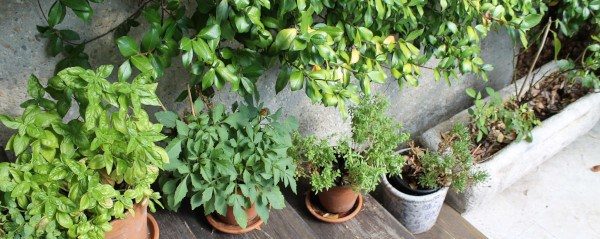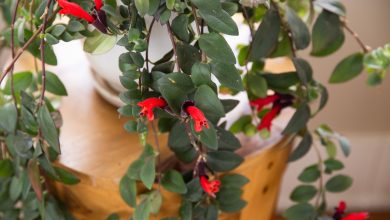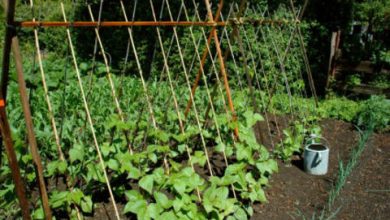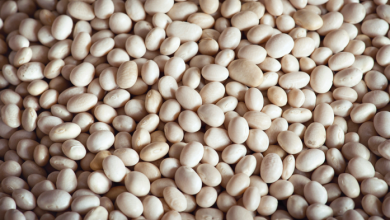5 Plants to make Tea that you can grow yourself: Complete guide

Good Agrohuerters, today we are going to talk about garden plants for tea. The common thing is to have vegetables in the garden, but there are other variants of the traditional garden, such as the garden for tea.

Next we are going to see how to grow these 5 plants, which are the most common to make homemade tea:
1. Ginger (Zingiber officinale)
It is one of the easiest plants to grow, it reproduces through its own root, it is one of the vegetables that grows. Take a piece of ginger and bury it in the substrate, watering generously as it needs a lot of moisture to sprout.
This vegetable has numerous properties, including a high content of vitamins, antioxidants, anti-inflammatory and slimming.

2. Tea plant (Camellia sinensis)
White, red, green and black tea is obtained from this plant. It really is a bush, and it is recommended that you start harvesting it once it is 3-5 years old, so that it does not grow excessively, it has to be pruned. It reproduces by seeds and cuttings. It requires somewhat humid climates and grows very well in partial shade. It has anti-inflammatory and digestive properties, burns fat and controls anxiety.
The different variants of tea are obtained depending on the treatment or the part that is extracted from the plant; For example, black tea is the result of a complete fermentation process, red tea is obtained by semi-fermentation, white tea is the most tender shoots or the new buds of the plant before they open, and green tea is obtained boiling the dried leaves.
3. Peppermint (Mentha L.)
It is an aromatic plant, which reproduces very well by cuttings. In general, it needs very little care such as very light watering and also repels certain pests such as aphids, flies and ants. It can grow in partial shade or even shade. Its growth is wide, so you can opt for a wide pot or do pruning to control its growth. The most notable properties are anti-inflammatory, helps the digestive system, reduces stress levels and headaches or migraines.
4. Basil (Ocimum basilicum)
Basil belongs to the aromatic group and is one of the most used in cooking.

It is a plant that usually reproduces by seed and needs warm environments and to be in very bright areas (although it can tolerate being in semi-shade), it needs moist soils but without waterlogging because it suffocates the roots quickly. In winter it should be protected from the cold. And in general it is necessary to prune it constantly, so that the leaves are born stronger and stronger. It has antiseptic, anti-inflammatory and sedative properties; It helps to digest and combat stress.
5. Rosemary (Rosmarinus officinalis)
Rosemary, like basil, is widely used in the kitchen for preparing dishes. It is a plant that we can sow or regrow without problem through cuttings. Its cultivation is very simple, it only requires a lot of light, light irrigation and a loose substrate, which is not wet, since rosemary supports arid and dry land very well. Among its many health benefits, the antioxidant and analgesic properties stand out, it helps digestion, it has antibacterial properties and it is very beneficial for liver and brain activity.
How to make the infusion?
The best way to make the infusion is to collect the youngest leaves and leave them in a place where there is no humidity and, if possible, from the sun, because what we want to achieve is that they remain completely dry. This process will take approximately 1 to 2 weeks, depending on where we left them.

Once we have the dry leaves, they are broken or crushed with the mortar. With these you can either boil for 4-5 minutes and pass the mixture through filter paper or you can make individual tea bags with the filter paper.
Ginger is an exception, since the leaves are not consumed in infusion, but the root is consumed; so it can be cut into small pieces and let it dry in the same way mentioned above, repeating the same process to make the infusion. A tip when making the tea is to mix it with other leaves, because it only has a strong flavor.
You can add a few drops of orange, lemon or tangerine juice to all the infusions, as well as a little grated peel, to give the tea a different and tastier touch. And to make it 100% natural you can sweeten it with stevia.
Agrohuerters, you have already seen how simple it is to grow tea plants as well as their maintenance. In general, all of them will also take up little space, because we will be pruning them continuously to collect their leaves. So to say we can have them in a pot without problems, we can include them in the aromatic garden for the kitchen. I hope you are encouraged to start the tea garden. See you soon!



![Photo of Loquat Cuttings: [Grafts, Time, Rooting and Planting]](https://www.complete-gardening.com/wp-content/uploads/2022/08/loquat-cuttings-grafts-time-rooting-and-planting-390x220.jpg)
